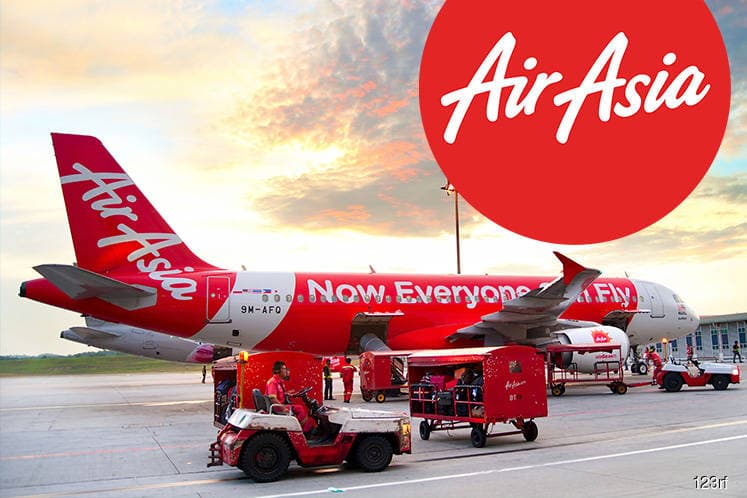
This article first appeared in The Edge Financial Daily on October 25, 2018
KUALA LUMPUR: Low-cost carrier, AirAsia Group Bhd, now trading at nearly half the price of its peak this year, presents a good buying opportunity for long-term investors as further upside to the stock is expected once crude oil prices stabilise, analysts say.
Moreover, the airline’s integrated efforts to monetise its assets through digitalisation is seen to be a sound strategic move because it takes advantage of its passenger database to enhance customer experience and improve ancillary income.
“We believe any retracement in share price is an opportunity for investors to take position in the long term,” MIDF Research analyst Adam M. Rahim told The Edge Financial Daily yesterday, pointing to the anticipation of further earnings upcycle once crude oil prices stabilise.
AirAsia Group is currently trading at RM2.50 having declined from a high in early March of RM4.60.
At the time of writing, Brent futures retreated 1.07% to US$75.62 (RM314.70) per barrel, compared to the price of oil of about US$64 in early March.
“Our current target price for AirAsia Group is RM3.62 pegged to a FY19 (financial year ending Dec 31, 2019) earnings per share of 10 times premised on the group’s compelling growth story, stable operations with added capacity, and continuous improvement to derive higher values per kilometre flown,” said Adam.
“As we impute the volatility in oil price, this has exerted a downward pressure on the price to earning (PE ratio (PE) of AirAsia at this juncture; most Asean airlines are trading at an average PE of 10 to 11 times excluding outliers,” he added.
He is also of the view that the airline’s integrated efforts to monetise its assets, via digitalisation is a good move as it takes advantage of its passenger database to enhance customer experience and improve ancillary income, and hence earnings.
TA Securities analyst Tan Kam Meng also sees value — or a “bargain” — for long-term shareholders at this level given that AirAsia Group “has a very strong market position in this region.”
“There is a very high foreign shareholdings in AirAsia Group. So I believe the sell-off may not necessarily be due to operational issues, but it could be due to external issues such as the weakening ringgit and external trade issues as well as the current high oil price,” he said.
Following the recent disposal of its leasing arm, AirAsia Group also has more cash at present, which could be distributed as special dividends, Tan highlighted.
“Their balance sheet is so asset light now. They have so much cash, so let’s just wait and see what they are going to do with the cash,” Tan said.
But in the short term, Adam expects further headwinds which are likely to provide resistance to share price gains. Tan said Budget 2019 which is to be tabled on Nov 2, could provide investors further insights.
However, analysts forecast cloudier skies for Air Asia’s long-haul unit Air Asia X Bhd which is currently trading at about 24.5 sen against 44 sen in March.
In a note yesterday, PublicInvest Research analyst Nur Farah Syifaa’ downgraded her earnings forecasts for the airline amid lower average fare expectations and rising fuel costs.
“We impute higher fuel price assumptions of US$85 per barrel from US$75 to US$80/bbl previously. These reduce our earnings by an average of 73% for FY18 to FY20,” she said.
Despite maintaining a neutral call on the stock, Nur Farah has reduced her target price to 23 sen from 35 sen previously, based on a 10 times multiple (8 times previously) of FY19 earnings per share, the multiple in line with regional low-cost carrier averages.